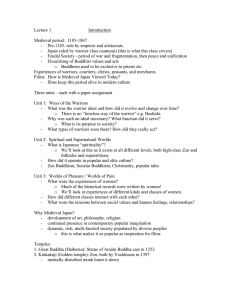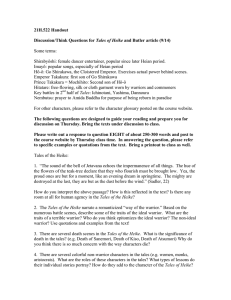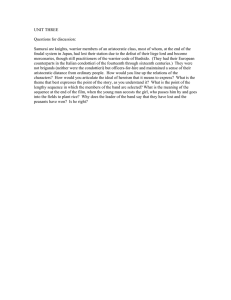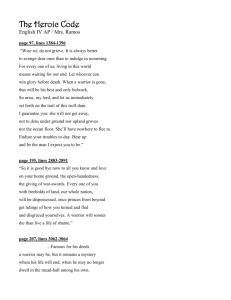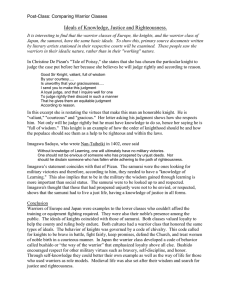Tales of the Heike
advertisement
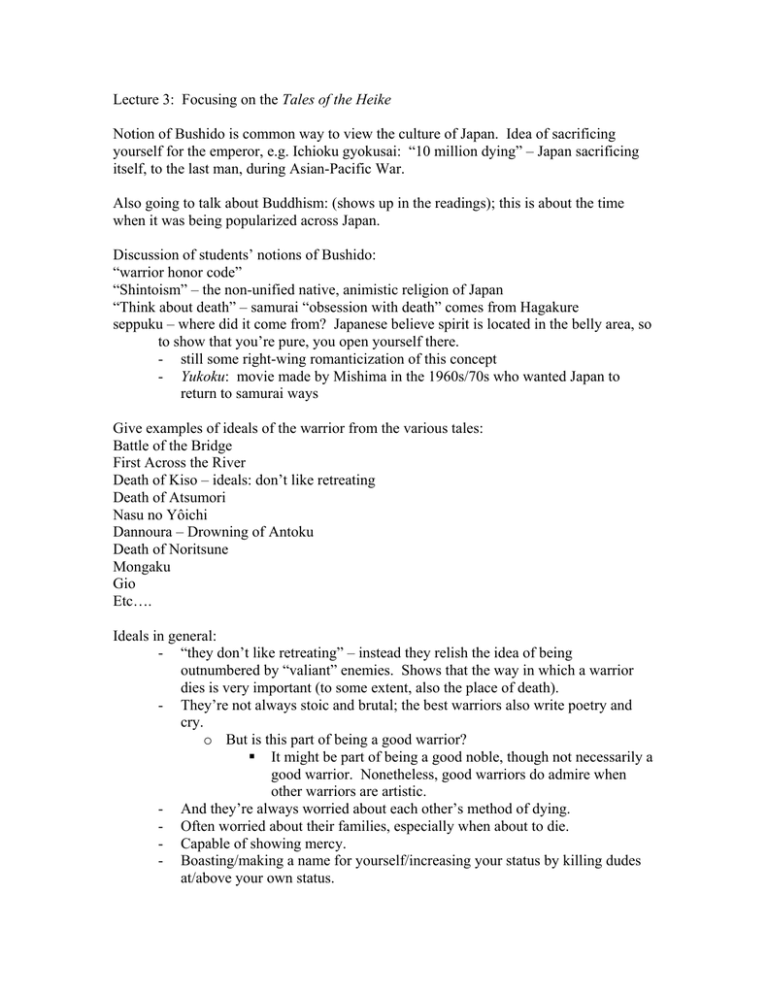
Lecture 3: Focusing on the Tales of the Heike Notion of Bushido is common way to view the culture of Japan. Idea of sacrificing yourself for the emperor, e.g. Ichioku gyokusai: “10 million dying” – Japan sacrificing itself, to the last man, during Asian-Pacific War. Also going to talk about Buddhism: (shows up in the readings); this is about the time when it was being popularized across Japan. Discussion of students’ notions of Bushido: “warrior honor code” “Shintoism” – the non-unified native, animistic religion of Japan “Think about death” – samurai “obsession with death” comes from Hagakure seppuku – where did it come from? Japanese believe spirit is located in the belly area, so to show that you’re pure, you open yourself there. - still some right-wing romanticization of this concept - Yukoku: movie made by Mishima in the 1960s/70s who wanted Japan to return to samurai ways Give examples of ideals of the warrior from the various tales: Battle of the Bridge First Across the River Death of Kiso – ideals: don’t like retreating Death of Atsumori Nasu no Yôichi Dannoura – Drowning of Antoku Death of Noritsune Mongaku Gio Etc…. Ideals in general: - “they don’t like retreating” – instead they relish the idea of being outnumbered by “valiant” enemies. Shows that the way in which a warrior dies is very important (to some extent, also the place of death). - They’re not always stoic and brutal; the best warriors also write poetry and cry. o But is this part of being a good warrior? It might be part of being a good noble, though not necessarily a good warrior. Nonetheless, good warriors do admire when other warriors are artistic. - And they’re always worried about each other’s method of dying. - Often worried about their families, especially when about to die. - Capable of showing mercy. - Boasting/making a name for yourself/increasing your status by killing dudes at/above your own status. - Taking heads Loyalty to leaders (still in early phases) Skill/prowess in battle “me first” – rushing into battle Can we compile this into an honor code? Sometimes strategy conflicts with honor. Note: the earliest versions of the Tales didn’t have the exaggerated feats by individuals. What do you think the function of these developing ideals is, in the culture? - maybe it has something to do with how in Buddhism, there is the idea of the impermanence of things; death as relative in larger scheme of things. That’s a good transition now into the spiritual aspect of Heike…. - humility - acceptance of when it is your time / your fate - karma – what role does it actually play? It’s not very straightforward or simple. - Impermanence; constant change (this is another source of humility) - mappo: 3 Ages of Buddhist law: age of flourishing of law, declining of law, end of law (after 10,000 years); Japanese believed it began around 1052, so, during the time of the Tales, the world was very chaotic and terrible since there was no more Buddhist law. - mujô: things just change; there’s no real order to it. Warrior tales are often about victory and triumph, but the tone of the Tales is both tragic as well as victorious, and there’s no clear party to “side with” (except out of sympathy). Tales of the Heike written down in 1371.

